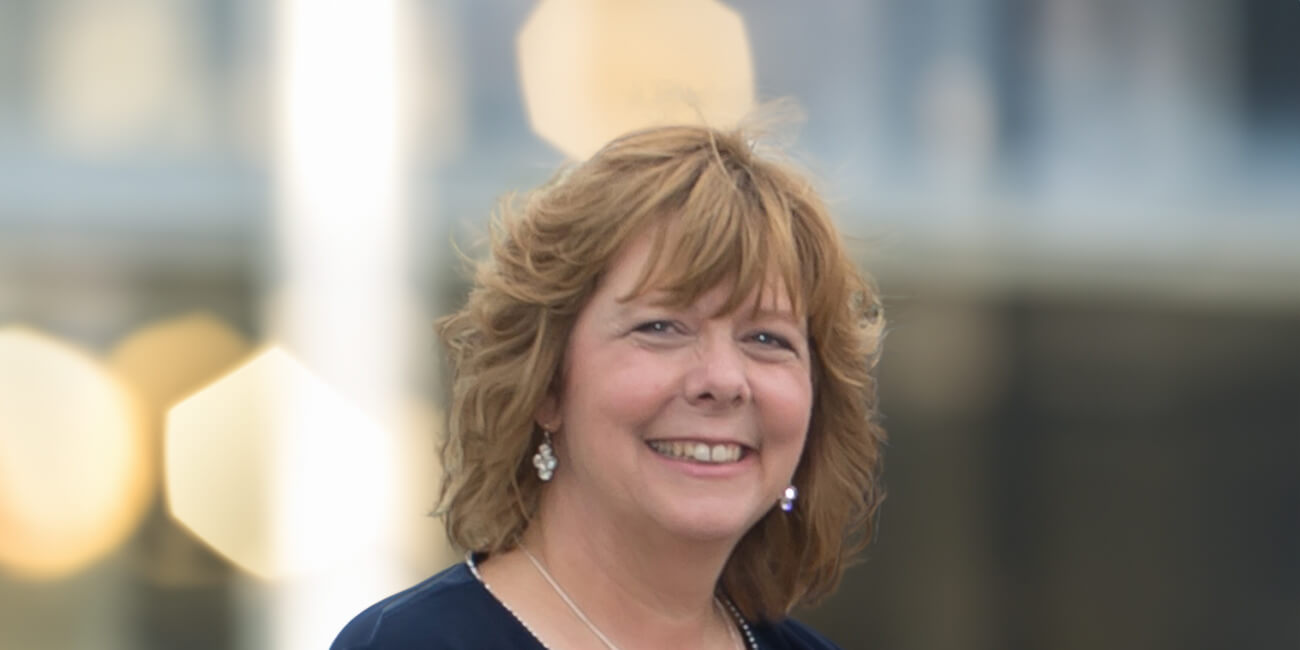
A veteran consultant and RDN discusses the welcome advances in dysphagia care and the importance of person-centered care.
The act of swallowing is a natural reflex that typically occurs up to 900 times a day. We swallow about 3 times per hour when asleep, once per minute when awake, and of course, even more frequently before and during meals. For many, however, swallowing doesn’t come so easily. Whether caused by brain or nerve damage or by problems with the head, neck, or mouth, dysphagia is a swallowing disorder that affects an estimated 1 in 6 people to varying degrees. This June as a part of their National Dysphagia Awareness Month observance, Hormel Health Labs speaks with Mary Rybicki, a consultant and registered dietician nutritionist whose wheels are always turning when it comes to feeding people with dysphagia.
Think of the Person
Mary—mostly figuratively—carries a lot of spinning plates. Since 1986, she’s been a consulting dietitian in post-acute care, specializing in improving both dietetic and food service operations in long term care settings. Among her many duties are: managing new nursing home nutrition and food service departments, training caretakers on nutrition topics, and conducting surveys and mock audits. Additionally, she’s been the editor in chief of the Academy of Nutrition and Dietetics NCM Diet Manual since 2015, and collaborates with the Academy’s Nutrition Care Manual (NCM) team for enhancements as needed. Mary says, “To move forward with anything, you should always be looking for opportunities for improvement.” Mary holds this perspective very close to heart, so much so that she often works off the clock whether she means to or not.
“It is a 24/7 job. I’ll be eating with my kids and say, ‘Oh, you know this would test out great for IDDSI,’ and they’re like, ‘Ma!’” IDDSI, or the International Dysphagia Diet Standardisation Initiative framework, is Mary’s guiding light. The framework provides common terminology to describe food textures and drink thickness, and when facilities and caretakers abide by this framework, it makes dysphagia care more manageable without limiting people’s food options. “There’s not a lot of options. You go in, and you can get a puree version of a food, but otherwise it’s the baked potato; that leaves out almost everybody with a chew-swallow problem.” When operationalized (fully incorporated into the facility or home), IDDSI makes meal prep easier and menus more individualized. What’s more, if and when a patient transfers to a new facility or at-home care, they’ll have a more comfortable transition if that new location also uses the IDDSI framework. Instead of the default baked potato, IDDSI’s code allows for more freedom and creativity in meal planning. Ultimately, Mary says, this leads to more person-centered care.
“IDDSI’s code cannot change, but you can individualize a meal plan for a particular person,” she says, “we can say, ‘OK, you hate milk? We won’t put milk on your tray. Do you love ice cream? We’re gonna make that work for you.’”
Good Things Take Time
Dysphagia affects over 590 million people (not necessarily “patients”) worldwide, and every single one of those people deserve flavorful and nutritious meals tailored to their needs and preferences. Determining that unique need is rarely done in an instant. Additionally, healthcare facilities fully grasping the IDDSI framework takes time; they have to put in extra hours up front, and therein lies Mary’s passion. She understands this change is hard, and she has also witnessed the magic that comes from embracing it. “It’s not always gonna be easy,” she says, “people can spend so much energy resisting”; however, once she cracks a healthcare team’s “why,” the team is on the same page and the work environment is healthier and more collaborative overall. Her advice: “slow down; practice.”
After countless webinars, presentations, and conferences, Mary’s “why” holds firm: “Oh my god, the smiles. The potential smiles are through the roof.” While she sometimes has to actively convince some facilities to adapt, Mary is optimistic about how dysphagia care has continued to evolve. She knows that you can respect a patient and their livelihood most when you respect the joy they receive from a delicious meal. In other words: it’s always an upgrade to the way a facility runs when they respect the person as well as the art of cooking itself (with or without a baked potato).